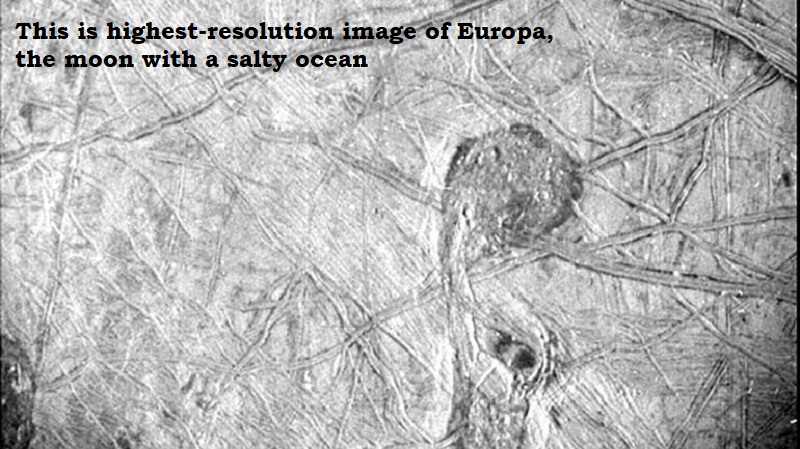
The Juno spacecraft, which is hovering above the surface of Jupiter, has captured the highest-resolution image of the watery world ever.
The region shown in the image is crisscrossed by a network of fine grooves and double ridges, piqueing the interest of astronomers all around the world.
The probe, which made its closest flyby of Europa on September 29, has sent back its most recent image. The spacecraft got as close to the Jovian moon’s surface as 412 kilometres above it; this moon will soon have its own specific mission departing from Earth.
During its most recent flyby, the spacecraft provided a detailed glimpse of a mysterious area of the moon’s severely broken icy crust.
The Stellar Reference Unit (SRU) a star camera used to orient the spacecraft obtained the black-and-white image with a resolution that ranges from 840 to 1,115 feet per pixel.
The NASA image, which shows a section of the moon’s surface that is 150 kilometres by 200 kilometres in size, shows a network of small grooves and long parallel lines that indicate elevated features in the ice.
Near the upper right corner of the photograph, as well as just to the right and below centre, are dark stains that might be connected to something from below erupting onto the surface.

Post Your Comments